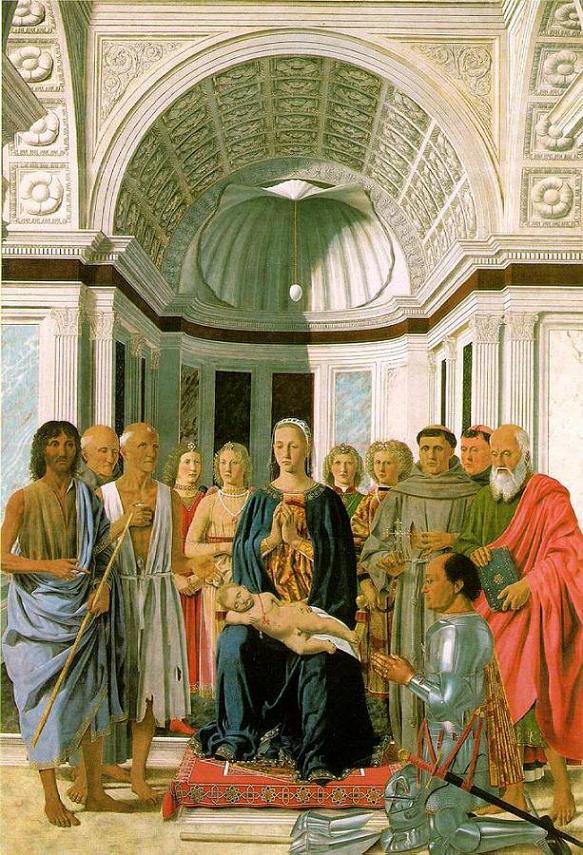
LIFE AS MYTH
![]()
JOURNAL
![]()
JOURNAL 2012
The seeds of wisdom
Leaning into the answer
![]()
WINTER 2012
Mapping the mystery
Dreams, symbolism & the unconscious
The Arnolfini Wedding Portrait
![]()
LIFEWORKS
![]()
ATLAS
![]()

WINTER 2012
THE REBIRTH OF VENUS
The Montefeltro altarpiece Piero della Francesca also known as Virgin with child, saints, angels and Federigo II da Montefeltro or The Brera Madonna, Piero della Francesca. 1465. Pinacoteca di Brera, Milan.
Throughout the ages, stories with certain basic themes have recurred over and over, in widely disparate cultures; emerging like the goddess Venus from the sea of our unconscious.
Joan Vinge (b. 1948), writerAs a teenager Piero della Francesca, the Italian artist who created the Montefeltro altarpiece, studied his craft in Florence while working with Dominico Venezian on a series of murals for the hospital Santo Maria Nuova. It was during this early part of his career that he began exploring the relationship between mathematics and art. One treatise authored by him, On perspective for painting, is the first to deal with the mathematics of perspective [creating a three dimensional effect in two dimensional works]. His mathematical knowledge influenced his art as evidenced by his use of foreshortening, geometric forms and innovative perspectives.
This painting is rich with symbolic imagery which explores death, resurrection, and rebirth. The coral beads have two purposes in this painting, functional and symbolic. Renaissance infants sometimes used coral beads for teething. In the visual vocabulary of the Renaissance painter, they were also a symbol of resurrection and rebirth. The mother and infant Christ, flanked by attendants, echo the traditional composition of mother and adult Christ found in Renaissance depictions of the pieta. Note the single coral pendant which Francesca places on the right side of the infant's chest, a reference to the sword wound that Christ received on the cross.
The thematic focus on rebirth applies not only to the infant Christ but to his mother Mary as well. Over time Christian iconography had incorporated the rich visual language of the ancient pantheons. For example, Piero della Francesca includes the shell motif at the top of the Montefeltro altarpiece, providing a direct link to the earlier mythic tradition of the divine feminine. According to Roman mythology, Venus is the goddess of love, fertility and beauty. The castration of her father Uranus by her brother Cronus fertilized the ocean and from the fertile waters Venus arose. Artistic interpretations do not typically depict the actual birth but the moment when Venus arrives at the shores of Paphos (Cyprus) in a shell.
Art historians interpret Francesca's incorporation of the shell as a way of portraying the rebirth of the pagan goddess in a more sacred form. The canopy above Mary provides a direct link to Venus and her mythological arrival in a shell at Cyprus. Francesca has suspended an egg from the canopy, creating a mirror motif to the traditional pearl within a shell. The earlier nature-based goddess had as the fruit of her creative act the pearl. The reimagined Renaissance goddess has the egg or the "fruit of her womb, Jesus".

